How to grow begonias
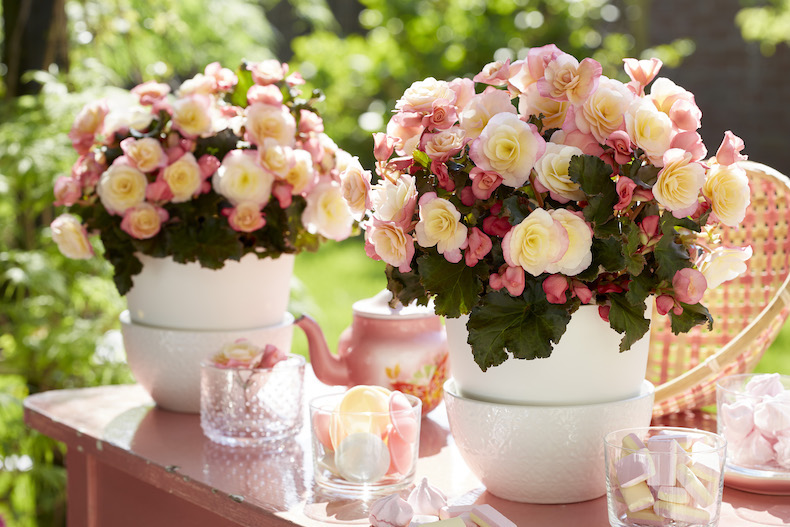
Begonias are garden favourites for their flamboyant and colourful summer blooms
Image: Thompson & Morgan
You'll be astonished at how many species of begonia are available. From leafy house plants to bright summer bedding - there are so many to try! Most commonly seen are the tender perennials, Begonia semperflorens and Begonia x tuberhybrida, which light up gardens with their flamboyant display. These hard-working plants add a bright rush of colour from summer through to late autumn.
Browse our full range of begonia tubers for inspiration or, for instant impact, order some of our beautiful begonia plants.
Which begonias can be grown in the garden?
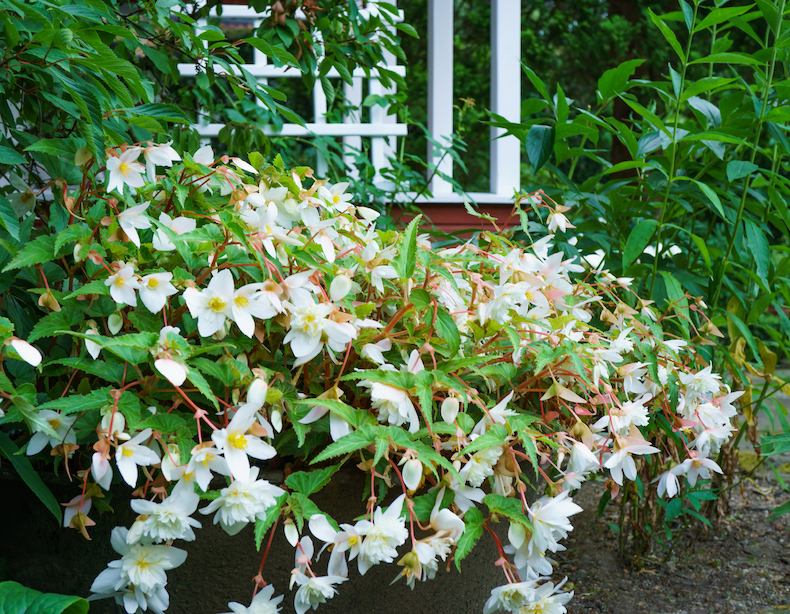
Begonia 'Santa Barbara' creates a harmonious display with its cool, white blooms and pink stems.
Image: Thompson & Morgan
Fibrous rooted Begonia semperflorens are generally treated as annuals for filling beds, window boxes and patio containers. Their fleshy leaves and tidy, upright habit make them useful for creating a neat, uniform bedding display that will bring colour all summer long. At the end of the summer they can be discarded, and fresh plants bought in the following year. Look out for the dark, bronze-leaved varieties which create a striking contrast to their green-leaved cousins.
The tuberous Begonia x tuberhybrida types are showier, with large blooms that make an impressive display. Some are upright and bushy, while others have gently trailing stems that are perfect for window boxes and hanging baskets. These garden show-offs will really bring the 'wow' factor, flowering endlessly from summer right through to the first frosts in late autumn.
Where to grow begonias?
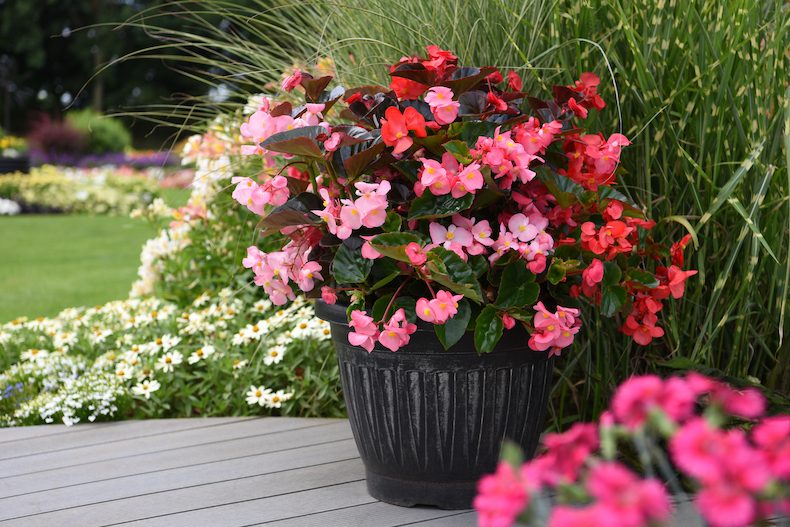
Begonia 'Mega-Watt' is ideal for beds, borders or containers
Image: Thompson & Morgan
Begonias are extremely adaptable, thriving in sun or shade. This makes them useful for drop-dead gorgeous, summer displays in even the gloomiest corner of the garden. In fact, the tuberhybrida types actually prefer a little less sun, as they tend to fade faster in very hot locations. They also have more delicate stems, which can snap in strong winds, so try to offer a sheltered site wherever possible.
Beds and borders:
Grow Begonia semperflorens in beds and borders to create a carpet of colour, or dotted in amongst mixed container displays. Varieties to try:
- Begonia semperflorens 'Organdy Mixed'
- Begonia semperflorens 'Fairyland Mix'
- Begonia semperflorens 'Sun Shade Mix' F2 Hybrid
Containers, hanging baskets and window boxes:
For a cascading display from baskets and window boxes, opt for a trailing Begonia x tuberhybrida cultivar. Alternatively, the upright, bushy forms enjoy a patio container of their own where they can really show off. Varieties to try:
- Begonia x tuberhybrida 'Apricot Shades Improved'
- Begonia 'Non-Stop Mixed'
- Begonia 'Pendula Mix'
- Begonia 'Waterfalls Bicolour'
How to grow begonias from plug plants
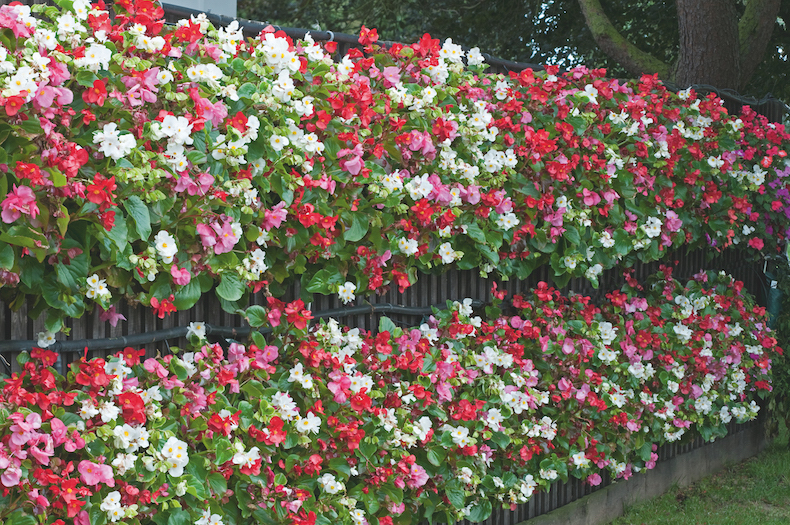
Begonia plug plants are a cost-effective way to create sensational displays that last the entire summer
Image: Begonia semperflorens 'Lotto Mixed' from Thompson & Morgan
Begonia plug plants are best grown on before they’re used in hanging baskets, patio containers or for bedding schemes.
- Pot up plugs into 7.5cm (3") diameter pots.
- Use a good quality, free-draining compost.
- Grow plug plants on in bright, frost-free conditions like a heated greenhouse, windowsill or conservatory.
- Transplant your begonias to their final containers when they have increased in size.
How to grow begonia tubers
Begonia tubers are ideal for containers and baskets, making a larger plant in the first year than plug plants or growing from seed. Watch the short video guide above to see how easy it is to plant begonia tubers. Here;s a quick recap:
- Start begonia tubers off in pots of moist, well-drained compost from February onwards.
- Simply press the tuber onto the surface of the compost to a maximum depth of 2cm, with the indented side facing upwards.
- Grow them on in a warm, frost-free position in bright light.
- Transplant begonias into their final containers when they have increased in size.
How to sow begonia seed
Growing begonias from seed is the most cost-effective method, but does require more patience. It's worth noting that begonia seed is extremely fine, so take care when opening the packet.
- Sow from mid-January to mid-March.
- Sow seeds on the surface of lightly firmed, moist seed compost in pots or trays. Avoid covering the seed or excluding light as this helps germination.
- Place in a propagator or warm location, at a temperature of around 24-27C (75-80F). Keep the surface of the compost moist but not waterlogged.
- Germination will usually take 15-60 days.
- When large enough to handle, transplant the seedlings into 7.5cm (3") pots and continue to grow them on in bright, frost-free conditions.
- Transplant begonias into their final containers when they have increased in size.
Caring for your begonias
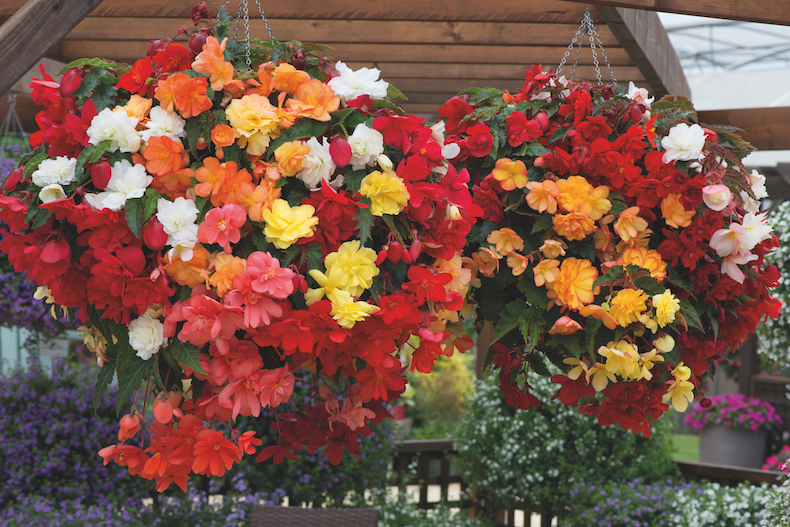
Once they are in full growth, your hanging baskets will need watering every day
Image: Begonia x tuberhybrida 'Illumination Mixed' from Thompson & Morgan
When begonia plants are well grown and all risk of frost has passed, gradually acclimatise them to outdoor conditions over a period of 7 to 10 days, before planting them in their final positions. Choose a sunny or semi-shaded position that’s protected from strong winds.
You'll need to water your begonias regularly. By the height of summer it’s likely that hanging baskets will need a good soak every day! Containers and window boxes will also need checking daily. You can set up an automatic watering system to help with this task.
Feeding is just as important if you want your plants to reach their full potential. You can add some slow release fertiliser to the compost when you transplant them to their final positions, or use a liquid fertiliser once a week throughout summer until the end of August.
Storing begonias over winter
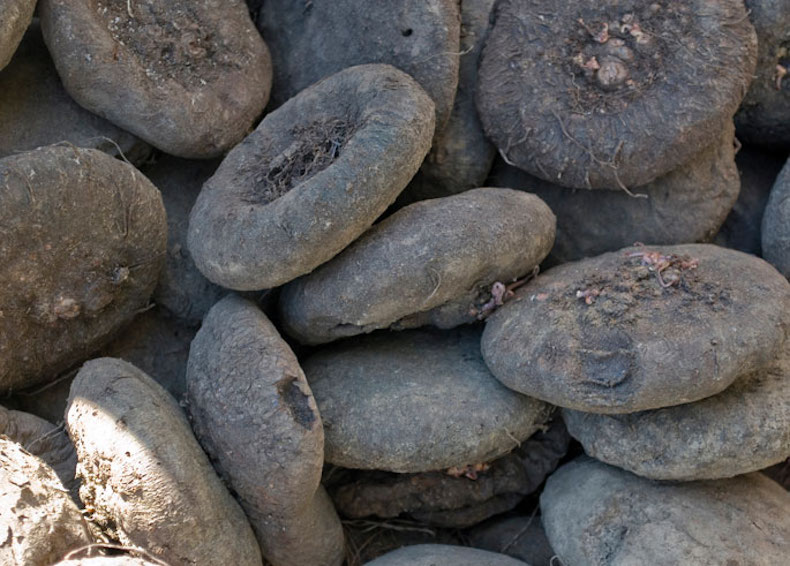
Dry begonia tubers in a well ventilated, frost free location before storing them for the winter
Image: Shutterstock
As the summer draws to an end, you may be wondering how to save your tuberous begonias for another year. It's surprisingly simple!
Stop feeding your plants by the end of August and reduce watering. When the earliest frosts blacken the foliage it's time to cut back the stems and remove the tubers from the soil. Let them dry off in a frost-free and well-ventilated location - a shed or greenhouse will do nicely. You can brush any remaining soil off of the tubers and trim away any last remnants of the stems. After a week they should be completely dry and can be stored in trays of loose, dry peat or sand. Alternatively, you can wrap them loosely in newspaper or paper bags. Store them in a cool, dry and frost-free place over winter.
Be sure to check them regularly and remove any tubers which are damaged or show signs of rotting. When spring comes around, simply pot them up and they’ll begin to grow again.
Now you've learned how easy it is to grow begonias, why not fill your garden with colour from these dependable, summer-flowering beauties! For more information on growing and caring for your begonias, visit our dedicated hub page.
Sign Up For Exclusive Special Offers




© 2024 Thompson & Morgan. All rights reserved. A division of Branded Garden Products Limited.



